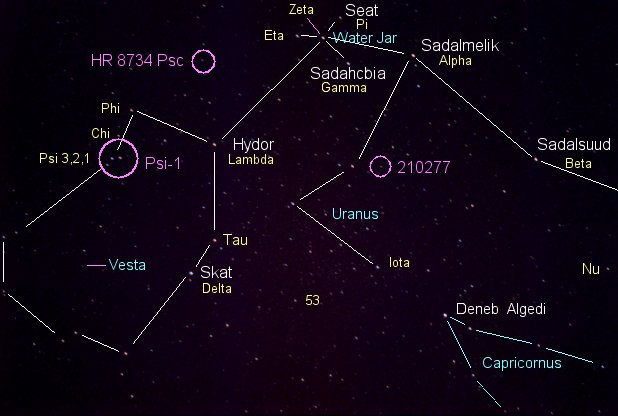 Psi-1 Aquarii, an evolved class K (K0) giant, and its Jupiter-like
planet are both orbited by a low-mass double star.
Psi-1 Aquarii, an evolved class K (K0) giant, and its Jupiter-like
planet are both orbited by a low-mass double star.
THE PLANET
The circle toward lower left shows the location of the evolved class K giant star Psi-1 Aquarii (in Aquarius, the Water Bearer), which is probably better known as 91 Aquarii. The planet, which has at least 2.9 times the mass of Jupiter, orbits Psi-1 every 182 days at a mean separation of 0.3 Astronomical Units, or about 80 percent Mercury's distance from the Sun. Nothing else is known about it.The upper-left circle shows HR 8734 in Pisces.